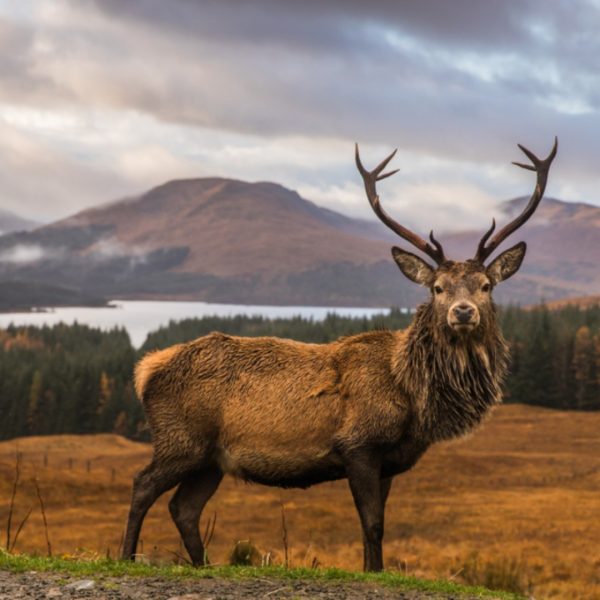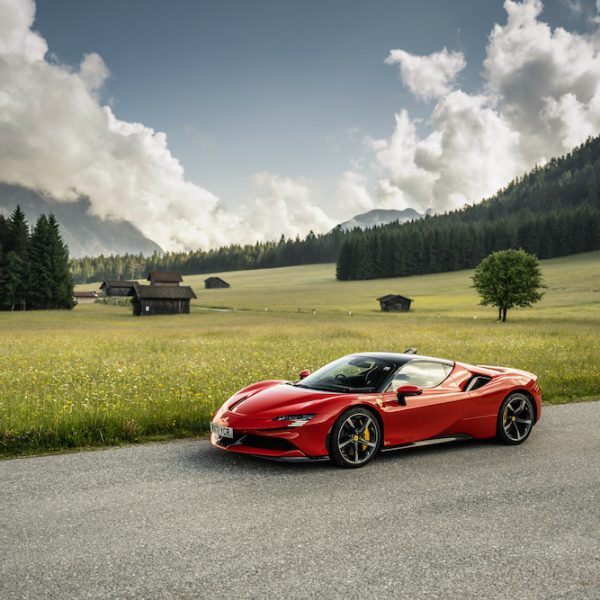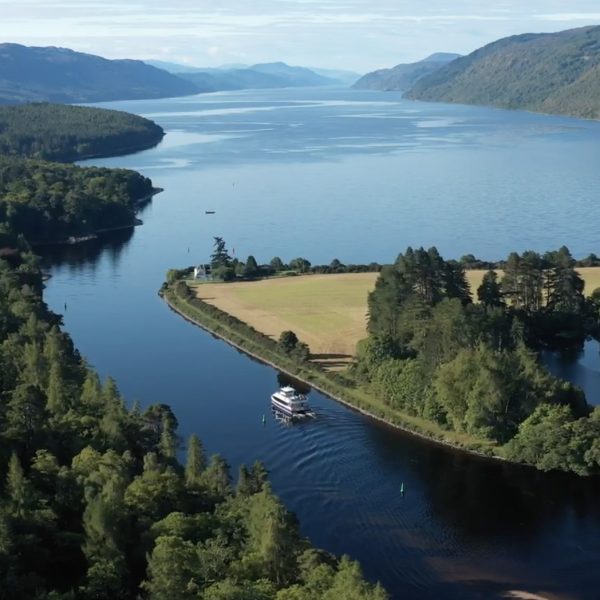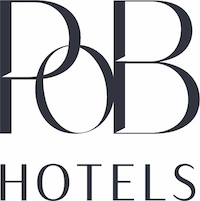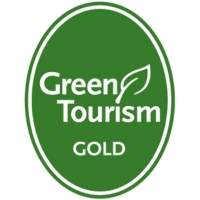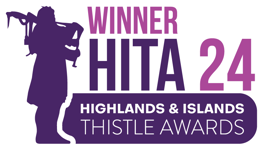Highland cows are an icon of Scotland and our guests are always keen to see them during a stay at Ness Walk Hotel. For one of the best Highland cows experiences in Inverness, add our “Heilan Coos at Cameron’s Tea Room” experience to your booking. Highland cows graze in the fields around this charming tea room, and the owner Morag can arrange a personal meeting with them on request. We’ll get you booked in at the tea room, where you can enjoy delicious food and drink, with great views of the coos from either inside or outside seating. This is a fantastic way to get up close to one of the best-loved animals of the Highlands, while tucking into delightful Scottish home-cooked refreshments.
So in preparation for your visit, let’s take a look at some fascinating facts about Highland cows. (Or Heilan Coos as we say in Scots)…
Highland cows are instantly recognisable
The Highland cow has a very distinctive look, setting it apart from other cattle breeds. You can recognise them by their long fluffy hair and two large horns. They may be a number of colours, including ginger, red, black, white, grey, silver and tan.
They are hardy, yet gentle
You’ll find Highland cows out in all weathers. Their long shaggy coat helps them to stay warm in winter and their long eyelashes and fringe protect their eyes. In the summer, they shed most of their thick coat, to keep them cool. Despite their hardiness, they are known to be gentle and friendly in nature.
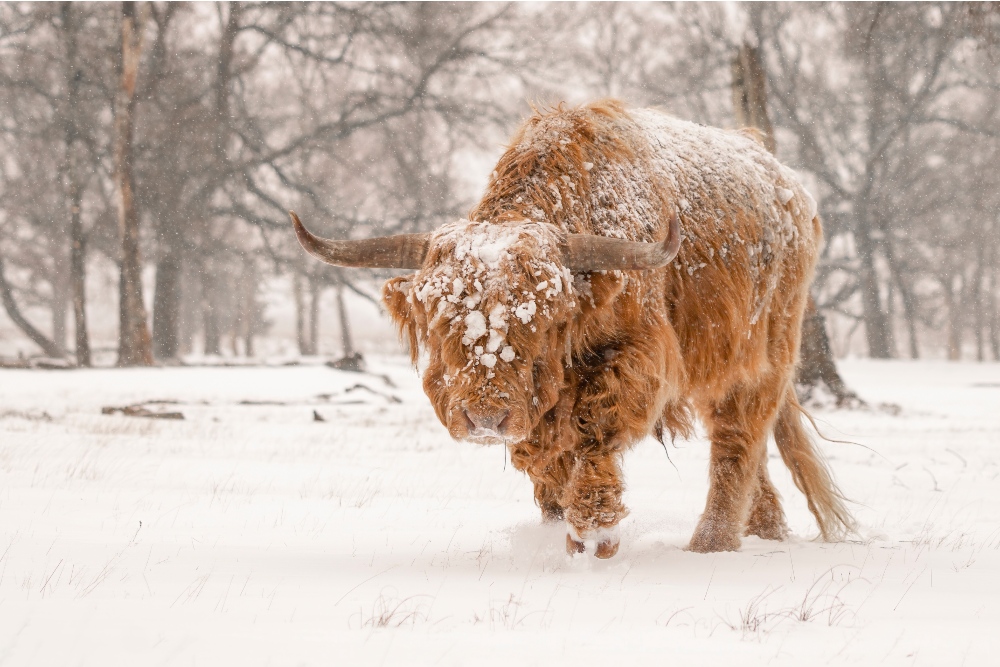
They come from the Scottish Highlands
Of course, Higland cows originated here in the Scottish Highlands. They are one of the oldest registered cattle breeds in the world. Originally, they were divided into two types; the Highlander of the mainland, and the smaller Kyloe of the islands. However, they are now all classed as one breed.
Their horns have many uses
Their long, pointy horns may look dangerous, but the cows generally use them to rake through the snow in winter, looking for food. You can also use them to tell the difference between male and females. Males have shorter, thicker and straighter horns, females have longer upward curving horns.

They live in folds and move in droves
The collective name for a group of Highland cows is not a herd, like it is for most cows, it’s a fold. What’s more, the term “moving in droves” derives from the Scottish word droving, which means moving cattle and livestock along roads and country lanes.
Highland cow facts and figures
Highland cows have a lifespan of 15 to 22 years. They reach maturity at around 18 months. Pregnancies last for 9 months, and they usually have one calf at a time, sometimes two. Males can measure up to 800 kg in weight and 120cm in height, with females up to 500 kg in weight and 106 cm in height. They consume around 70 kg of grass and plants every day!
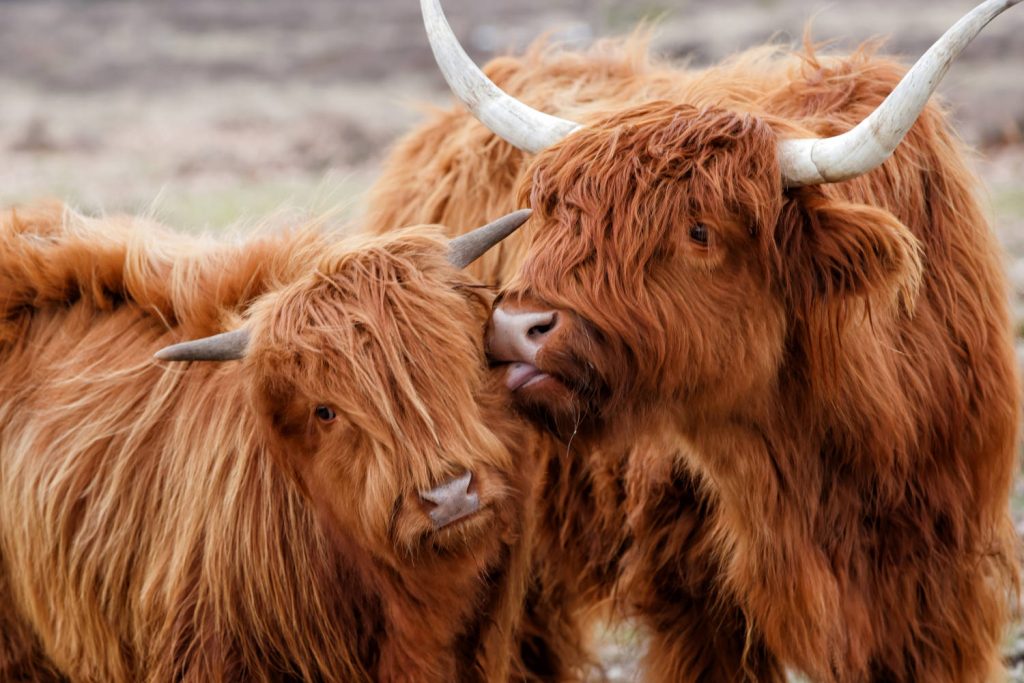
Book a Highland cow experience during your stay with us at Ness Walk in Inverness and discover these remarkable hairy coos for yourself! Explore our experiences here and book your 5-star vacation in Inverness today!
 See Our Offers
See Our Offers

 Book now
Book now



